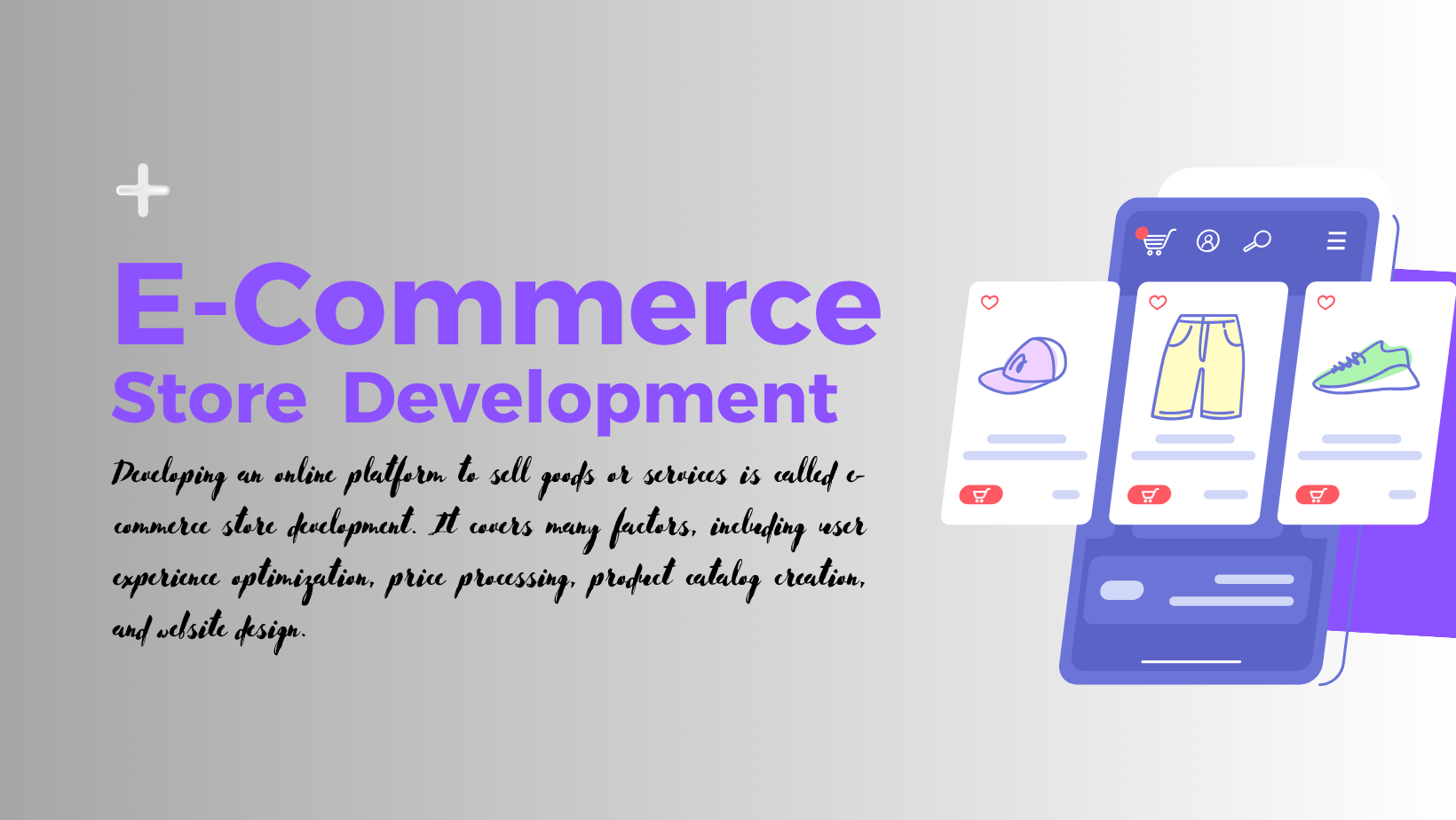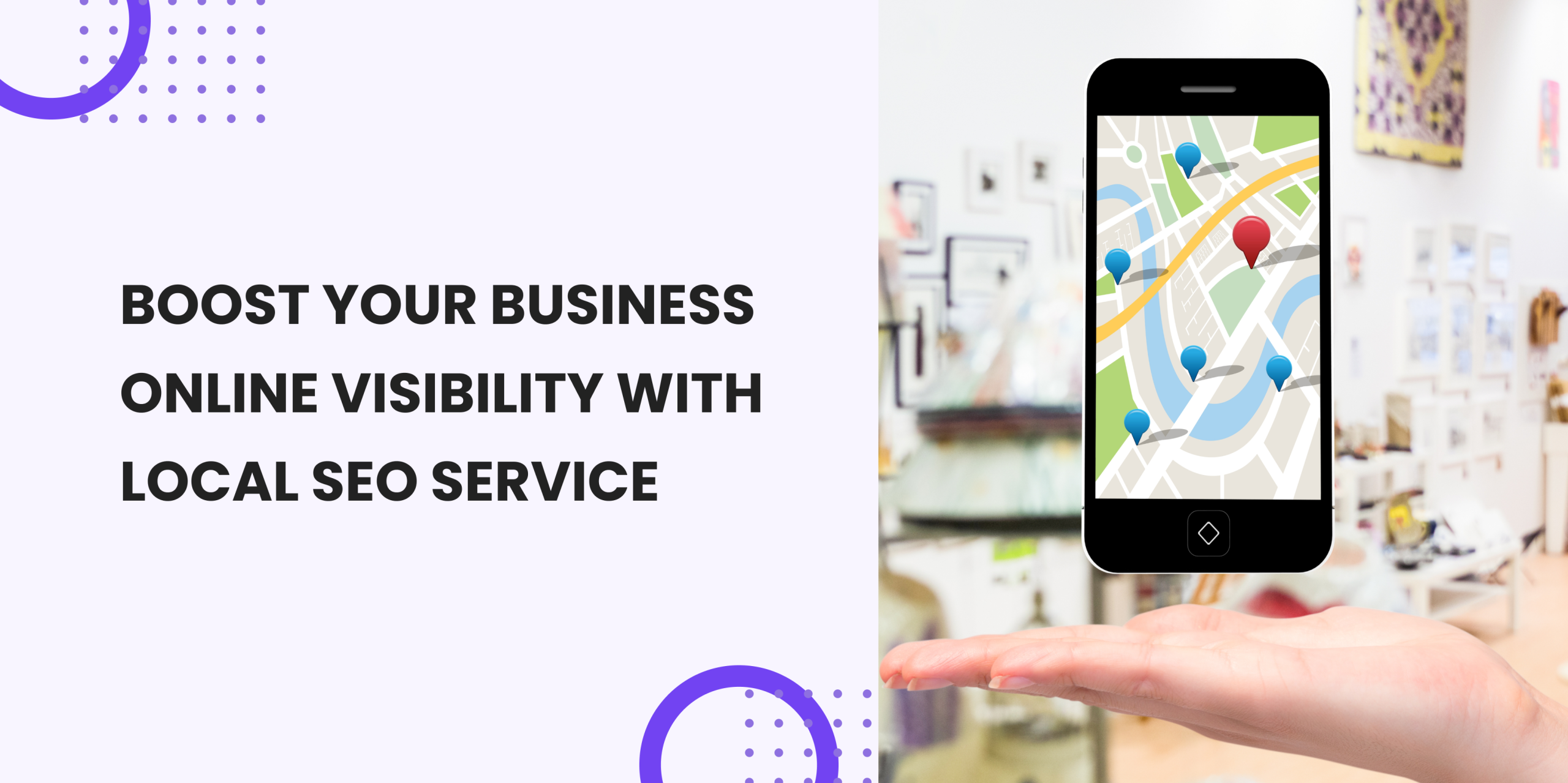1E-commerce has changed how businesses operate in the digital age. Statista believes online income will attain $6.5 trillion by the previous year. E-commerce businesses are growing because they provide purchasers all around the world with accessibility and ease. The marketers are hoping to capitalize on this profitable area. Expertise in the art of e-commerce store development is vital as the demand for online buying keeps rising.
Key Takeaways
- Developing a visually beautiful, user-friendly, and practical e-commerce platform requires thorough website design.
- Establishing strong security protocols and integrating safe payment mechanisms shield customer information and foster self-belief.
- Making user experience optimization a top priority by using smooth navigation and intuitive layout. It boosts engagement and encourages conversions.
- Ensuring the e-commerce website is conscious of cellular gadgets allows it to serve the increasing range of mobile customers properly.
- Sustained fulfillment requires continuous development via recurring testing, observation, and generation based on consumer input and industry trends.
Knowing the Development of E-Commerce Stores
Developing an online platform to sell goods or services is called e-commerce store development. It covers many factors, including user experience optimization, price processing, product catalog creation, and website design. An e-commerce website can also enhance a business’s earnings while giving customers a faultless online shopping experience.
Website Design and Development
This procedure includes arising with the e-commerce stores’ visual fashion, organizational framework, and functionalities. It includes creating the user interface (UI), creating the product catalog, and ensuring the aesthetics attract the audience’s tastes. To construct the website using HTML, CSS, JavaScript, and other internet-based technology, improvement calls for programming and coding.
Product Catalog Setup
To make it easier for clients to navigate, items should be logically organized and classified. Developing product pages with thorough descriptions, specifications, prices, and pictures is a part of this. Additionally, customers may find certain goods quickly and correctly by using the search tool, sorting options, and filter settings.
User Experience Optimization
User optimization aims to make the e-commerce website more user-friendly, wonderful, and intuitive for visitors. It includes reducing distractions, streamlining navigation, and presenting obvious (CTAs) to help clients through the purchasing system. Ongoing user experience in refinement and development is facilitated by usability testing and iteration based on findings.
Mobile Responsiveness
It is critical to ensure the e-commerce store is optimized for mobile responsiveness. It gives the growing use of mobile gadgets for online buying. This involves developing a website that is both consumer-friendly and consistently responsive throughout smartphones. Using responsive layout techniques ensures that information is proven well and that capability is available on all devices.
Organizing Your Online Store
Careful guidance is essential before beginning the building of an e-commerce store. Finding customer options and market trends is easier by carrying out the marketplace and inspecting the target audience. The cornerstone of a business is selecting the right e-commerce platform. Important elements encompass growing a detailed advertising and marketing plan, pricing strategies, and product category definitions.
Steps to Develop an E-commerce Store
1. Domain Registration and Hosting Setup
Getting a site gives your online keep an awesome deal, which is like claiming your digital real property. Selecting a trustworthy online employer ensures that users get the right of entry to your website 24/7. This essential level creates your net presence and presents the framework for future growth and development.
2. Selecting and Personalizing a Template or Theme
Your online store’s visible fashion is decided by using the subject matter or template you have chosen. It reflects your brand identity and center values. Choosing a layout that is aesthetically desirable and smooth to use is important.
The layout is essential for drawing in and preserving clients. Customization permits you to match the subject to the exclusive style of your enterprise. You can ensure consistency and stand out inside the crowded e-commerce marketplace.
3. Creating Product Pages and Categories
Customers will find it easier to locate what they are searching for if your items are organized into classes. Thorough product descriptions give customers crucial information to judge what to buy. SEO techniques, product pages, and categories that can be nicely organized while buying also boost search engine publicity.
4. Including Payment Gateways and Security Measures
Converting website visitors into paying customers calls for seamless price processing. Integrating SSL certificates and steady price methods protects sensitive customer information, fostering confidence. Ensure your organization has robust security measures in the area to guard against any cyber risks for you and purchasers. It is essential for growing a safe online shopping environment.
5. Search engine optimization (SEO)
To grow the exposure of your website and generate organic visitors, you need to place search engine marketing into operation. Your store’s function in search engine results pages is advanced by optimizing product pages. It ultimately will increase income and conversions. Your online store could be placed for long-term fulfillment in the aggressive online industry with a well-thought-out SEO plan.
6. Testing and Quality Assurance
An intensive testing of all website capabilities is critical for user experience throughout various gadgets and browsers. In the assurance procedure, usability testing, compatibility analysis, and technical problem troubleshooting are critical. You can ensure your online enterprise by seeing and solving feasible problems before they arise.
7. Opening the Enterprise
Now that everything is set up, it’s time to open your online commercial enterprise and let the world understand it. Social media, electronic mail advertising and marketing, and different promotional techniques to announce the launch create a hobby. It will increase internet site traffic. Tracking facts and getting client comments lets you enhance and optimize your online e-commerce business for long-term success.
Top Techniques for Developing E-Commerce Stores
Adopting the following first-rate practices is critical to an e-commerce keep’s success:
1. Putting the User Experience First
Having an interface that is straightforward to use ensures that customers can locate gadgets. Customers can also browse your internet site and make transactions without problems. Users are guided through the buying manner effortlessly by using intuitive design, which increases purchaser pleasure and loyalty.
2. Implementing Responsive Design
You may ensure your website adjusts to various screen sizes and devices by setting responsive design into exercise. It gives clients a regular experience throughout the board. As humans buy online by using devices, this adaptability becomes increasingly essential.
3. Simplifying the Checkout Procedure
By decreasing friction points, the checkout system may be made easier. It lowers the hazard that clients would depart their carts. Minimal form fields and clear, smooth-to-follow instructions accelerate transactions and increase conversion prices.
4. Providing a Variety of Payment Options
Offering a variety of payment alternatives improves comfort and comprises differing consumer options. The capacity to accept credit cards, PayPal, and mobile payment techniques complements the whole shopping experience. It is possible to accommodate a whole lot of price possibilities.
5. Securing Customer Data
Sensitive purchaser facts, including payment information and private records, are safeguarded through sturdy safety processes. Secure authentication methods, PCI compliance, and SSL encryption increase customer confidence in your business.
6. Providing Detailed Product Information and SnapShots
Product descriptions and screenshots give clients the information they need to make sensible purchase selections. The product’s advantages are offered in clean, comprehensive causes and numerous screenshots. It lowers doubt and boosts self-assurance.
7. Optimizing for Mobile Devices
You may take advantage of the clients who purchase by ensuring your website works perfectly on smartphones. Quick loading times, easy navigation, and responsive layout components improve user experience and grow conversions.
8. Common Challenges and Solutions
Although growing an e-commerce store has numerous challenges, it also demands solutions. Businesses may face challenges encompassing marketplace contention, technological troubles, and protection dangers. Nonetheless, those problems may be decreased, and achievement may be ensured by implementing strong protection guidelines.
9. Risks to Security
E-commerce websites are frequently the focal point of cyberattacks, encompassing malware outbreaks, information breaches, and fraudulent price transactions. Hackers should target consumer information kept in databases or take advantage of coding flaws within the website.
Solution: To defend in opposition to security dangers, it’s encouraged to apply strong safety protocols. These protocols include firewalls, SSL encryption, and frequent safety audits. Protection is further improved by using steady payment gateways. It is abiding by PCI compliance guidelines and training staff members on cybersecurity practices.
10. Technical Errors
Technical mistakes can impair user experience in sales. Examples of these errors include internet site crashes, gradual loading times, and broken hyperlinks. Code flaws, server malfunctions, or browser or device compatibility troubles may bring on these problems.
Solution: Consistent website maintenance and observation facilitate the early detection and backbone of technological problems. Compatibility and operation are assured by thoroughly checking out several gadgets and browsers. Hiring knowledgeable developers and IT experts to troubleshoot and quickly restore problems is crucial.
11. Market Competition
There is fierce competition among e-commerce corporations as they compete for clients’ money and time. Strategic differentiation and successful advertising and marketing projects are essential to face out from the opposition. It brings in loyal customers.
Solution: Businesses may additionally efficiently differentiate themselves by doing marketplace studies to decide customer goals and unique selling prepositions. Creating memorable branding, thrilling content, and tailored marketing techniques is a useful resource in attracting customers’ interest.
Keep up with Industry Trends.
Emerging client tastes, market developments, and new technology all contribute to the dynamic of the e-commerce sector. Businesses adjust to those tendencies to avoid threats and restrictions to increase.
Solution: Businesses might also continue to be in advance by automatically observing consumer behavior, enterprise traits, and rival tasks. Employees who receive persistent education and expert improvement are positive to be knowledgeable and professional. It is at making use of new trends and technology.
Businesses may correctly negotiate the complexity of growing an e-commerce website online. They set themselves up for a lengthy-term boost and profitability by proactively tackling those common problems.
Conclusion
The boost of e-commerce stores is complicated and requires careful planning, wearing out, and ongoing optimization. Businesses must maximize their e-commerce endeavors’ capability by emphasizing user experience. It utilizes generation and last elasticity in response to transferring consumer developments.
E-commerce business proprietors may additionally take their online business to new heights of achievement. It is within the online marketplace by placing the best strategies in location.
Frequently Asked Questions(FAQs)
Q1. Why is User Experience (UX) Critical for E-Commerce Growth?
User experience (UX) is crucial because it directly impacts customer satisfaction and conversion rates. A well-designed UX enhances usability, increases engagement, and encourages repeat purchases, driving the growth of e-commerce stores.
Q2. How Can E-Commerce Businesses Ensure Customer Data Safety?
E-commerce businesses can secure customer data through SSL encryption, regular security audits, and compliance with standards like PCI DSS. Training staff in cybersecurity practices also helps reduce the risk of data breaches.
Q3. What Are the Benefits of Responsive Design for E-Commerce Websites?
Responsive design ensures e-commerce websites function well on all devices, including smartphones, tablets, and PCs. This leads to higher conversions, increased mobile traffic, improved SEO, and a consistent user experience.
Q5. How Can E-Commerce Companies Reduce Cart Abandonment?
To reduce cart abandonment, e-commerce companies can simplify the checkout process by minimizing steps, reducing form fields, offering guest checkout options, providing multiple payment methods, and ensuring clear pricing.
Q6. How Important Is Digital Marketing for E-Commerce Success?
Digital marketing is essential for driving traffic, building brand awareness, and increasing sales. Effective strategies include PPC, email marketing, social media marketing, content marketing, influencer collaborations, and SEO, all of which boost conversion rates.
Q7. What Does an E-Commerce Developer Do?
An e-commerce developer manages the technical aspects of an online store, ensuring efficiency, scalability, and security. They work closely with store management to align technical solutions with business goals.






